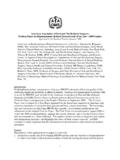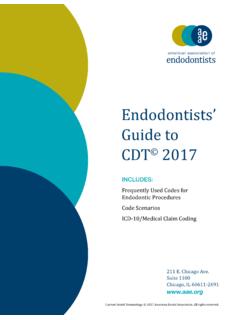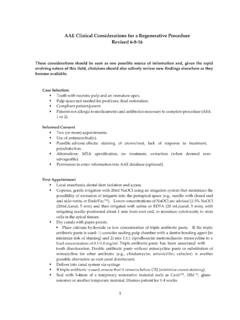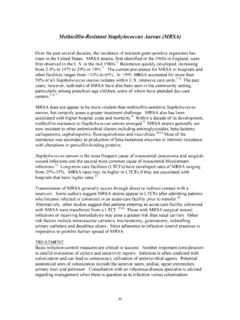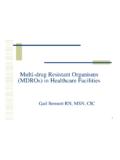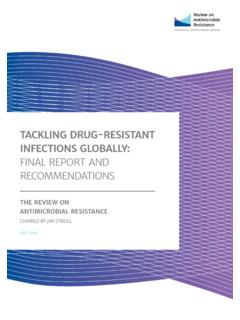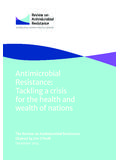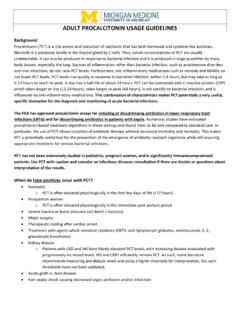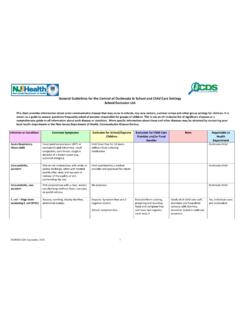Transcription of AAE Guidance on the Use of Systemic Antibiotics in Endodontics
1 AAE Guidance on the Use of Systemic Antibiotics in Endodontics | Page 1 AAE Position StatementINTRODUCTIONThe spectrum of endodontic pathosis includes many conditions for which dentists and endodontists determine that it is appropriate to prescribe Antibiotics . Some of these conditions involve purely an inflammatory reaction, and some involve various stages of infection. This infection may be localized to the pulp and periapical tissues, and it may be spreading to regional lymph nodes, or systemically. This document is intended to present the available evidence related to prescribing Antibiotics , highlight appropriate clinical recommendations and identify gaps in knowledge for which personal judgment is the best guide for assessing risks and benefits in this document is not intended to be an exhaustive systematic review on the subject.
2 It will also not address the Systemic or topical application of Antibiotics following traumatic injuries to teeth (which are addressed in other AAE guidelines), and the use of Antibiotics as intracanal medicaments. Finally, this document is not intended to present new knowledge in the field. Overall risks and benefits of prescribing Systemic antibioticsAntibiotics are an important class of drugs. Clearly, the benefits of correct use of Antibiotics include the resolution of infection, prevention of the spread of disease and minimization of serious complications of disease. Up to 50% of all Antibiotics are prescribed or used incorrectly.
3 Risks associated with the use of Antibiotics include nausea, vomiting, diarrhea and stomach cramps because of the disturbances of the gut particular concern to the use of oral Antibiotics is the development of Clostridium difficile infection. C. difficile was responsible for almost half a million infections and was associated with approximately 29,000 deaths in 2011 (1). Among the Antibiotics prescribed for endodontic infections , clindamycin, amoxicillin, cephalosporins are commonly associated with C. difficile infection, whereas macrolides and metronidazole are less commonly so (2). Other side effects include the development of yeast infections in the mouth or vagina, again resulting from an imbalance in the body s normal flora.
4 Antibiotics can also cause allergic reactions ranging from rash, skin reactions, Stevens-Johnson syndrome to breathing difficulty and This DocumentThis paper is designed to provide scientifically based Guidance to clinicians regarding the use of Antibiotics in endodontic treatment. Thank you to the Special Committee on antibiotic Use in Endodontics : Ashraf F. Fouad, Chair, B. Ellen Byrne, Anibal R. Diogenes, Christine M. Sedgley and Bruce Y. Cha. 2017 Distribution InformationAAE members may reprint this position statement for distribution to patients or referring AE Guidance on the Use of Systemic Antibiotics in EndodonticsThe Guidance in this statement is not intended to substitute for a clinician s independent judgment in light of the conditions and needs of a specific additional resources at are essential medications but their overuse and misuse are creating resistant bacteria that are not susceptible to any Antibiotics .
5 Each year at least two million people in the become infected with multidrug resistant bacteria and 23,000 deaths have been attributed to these infections (3, 4).Use of adjunctive Antibiotics in addition to adequate debridement and surgical drainageThe key to successful management of infection of endodontic origin is adequate debridement of the infected root canal and drainage for both soft and hard tissue. The objectives for treatment of infections of endodontic origin are removal of the pathogenic microorganisms, their by-products, and pulpal debris from the infected root canal system that caused the periapical pathosis and establishment of conditions favorable for the lesion to resolve.
6 In addition to adequate debridement of the root canal system, localized soft tissue swelling of endodontic origin should be incised and drained concurrently. Studies have shown that adjunctive Antibiotics are not effective in preventing or ameliorating signs and symptoms in cases with irreversible pulpitis, symptomatic apical periodontitis, or localized acute apical abscess, when adequate local debridement, medication and incision for drainage, if indicated, have been achieved (5-11).When using adjunctive Antibiotics in addition to adequate debridement and surgical drainage, such as in cases with spreading infections , the practitioner should use the shortest effective course of Antibiotics , minimize the use of broad-spectrum Antibiotics and monitor the patient of Antibiotics in the absence of adequate debridement and surgical drainage As noted before, there is evidence from randomized clinical trials and systematic reviews to indicate that supplemental Antibiotics following adequate debridement and drainage in cases of localized endodontic infections is ineffective (5-8).
7 It is also the standard of care to prescribe primary or adjunctive Antibiotics in conjunction with local debridement and surgical drainage for patients who have spreading infections , and to monitor their progress closely as these prescriptions are made empirically and may be ineffective or insufficient for adequate , the literature is not clear on indications, efficacy or duration of Antibiotics for cases in which the practitioner is not able to render local debridement and drainage at the time of patient presentation, or in cases that are complex and the efficacy of local treatment may not be completed.
8 In these cases, it is not known whether Systemic antibiotic therapy would provide sufficient relief of symptoms and prevention of spread of infection to warrant a prescription, since etiology of the infection may not have been fully addressed. Furthermore, the answer to these questions may not be feasible to determine through objective research in the future, as the necessary study design may be considered unethical to literature contains many studies that may not reach contemporary design standards that eliminate bias in research, and much anecdotal evidence that promote prescription of Antibiotics for the patient s comfort and to alleviate their apprehension (12-14).
9 Likewise, there are several surveys that show that both general dentists and endodontists routinely prescribe Antibiotics for patients with dental pain (15, 16). This leads to the question of whether prescribing Antibiotics for patients in these situations is appropriate, warranted and defensible from a medico-legal controversy is somewhat similar to that surrounding the need for, and efficacy of, prophylactic Antibiotics in cases where there is little evidence to their efficacy. An example of this would be to prevent late prosthetic joint infection following a dental appointment. However, what is different here is the concern about patient comfort and fear of spreading of the infection systemically.
10 The issue is further complicated by the fact that many patients perceive improvement in their condition after taking Antibiotics , at least in part due to a strong placebo effect that Antibiotics may have (17).Ultimately, dentists and endodontists must weigh the benefits and risks of Antibiotics , as previously stated, and make an informed decision with their patients on the appropriateness of using Antibiotics in these cases. One strategy that may be useful is to educate the patient about the signs and symptoms of a spreading infection and give the patient a stand-by Antibiotics prescription. The patient would only fill the prescription and call the prescriber s office, if he/she perceives this type of infection to be occurring, prior to receiving definitive Guidance on the Use of Systemic Antibiotics in Endodontics | Page 3 Comparison of the efficacy of different types, dosage and duration of antibioticsThe therapeutic use of Antibiotics relies on achieving at least the minimal inhibitory concentration (MIC) of the drug, against sensitive microorganisms in the site of infection.

